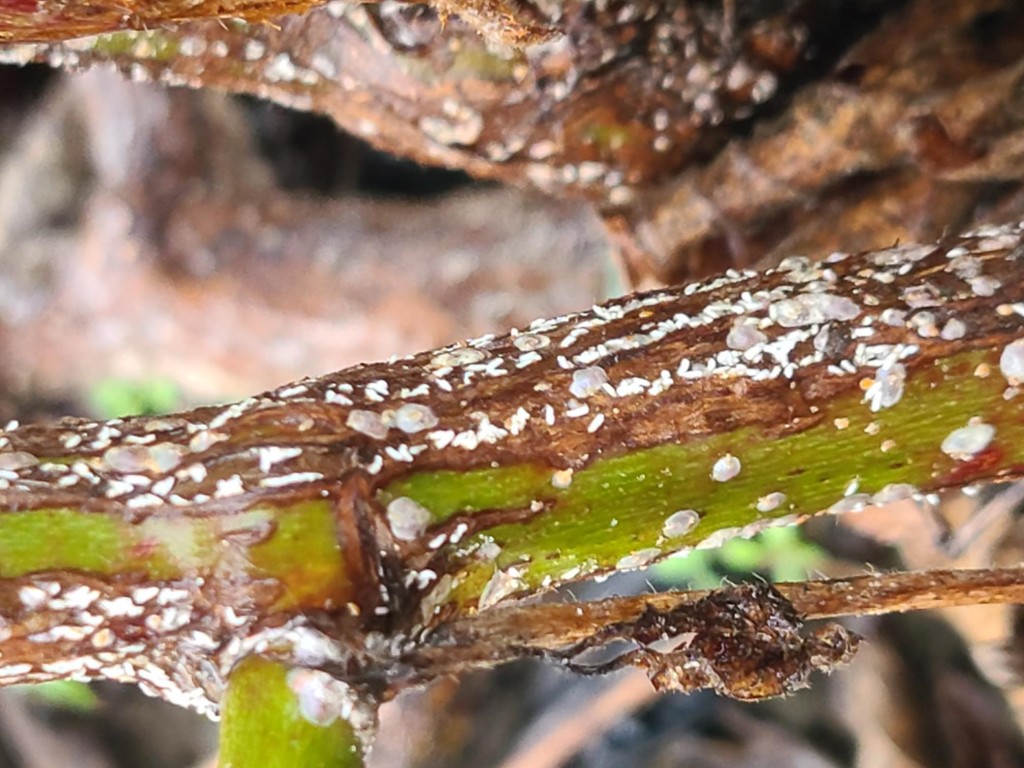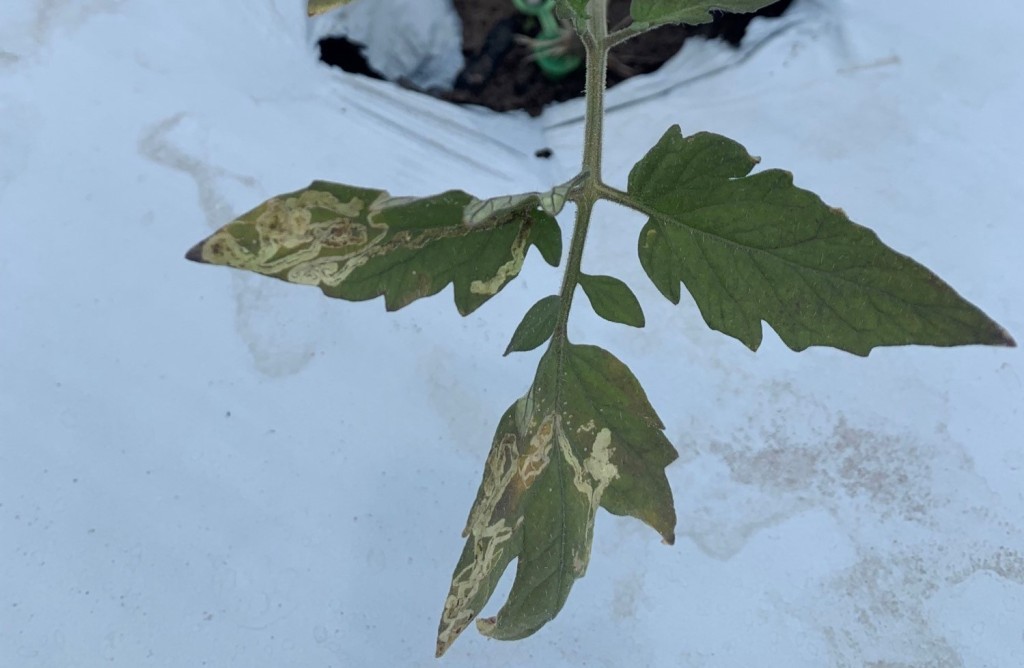Clemson Extension agents provide updates in the The South Carolina Grower this week about the status of various crops being produced throughout the state.
Weekly Field Update-8/9/21
Coastal Region
Rob Last reports, “Generally speaking, we are in the change-over period from spring to fall crops, with some fumigants being applied to next year’s strawberry plantings. If fumigants are to be used, make sure soil moisture is good and beds are firm to gain maximum efficacy. One thing we have observed in blackberries and blueberries in the area is the emergence of bark scale. Bark scale is a new pest to South Carolina and has previously been noted in ornamentals. However, reports for Asia, where the pest is native, indicate the bark scales can survive on Rubus species.

The images show the egg sacks and adults of the bark scale. The insects appear white and are very waxy, similar in appearance to mealybugs. The wax coatings can make management complex, preventing insecticides from penetrating the layer to be effective against the insects. The addition of crop oils to the pesticide solution may enhance efficacy by helping to strip off the waxy coatings. In blueberries, adults can be found underneath the exfoliating bark, again making contact with the insecticides more difficult. When crawlers emerge, they will be pink and barely visible to the naked eye, and monitoring will be easier with the aid of a hand lens. We will find crawlers hatching in April or May, with a second flush emerging in late summer. An excellent way to detect crawler movement is to wrap the branches in double-sided sticky tape to help to catch the crawlers. Contact insecticides can be very effective against the crawlers. Insect growth regulators may also be effective for management. Unfortunately, systemic materials such as imidacloprid appear to have little effect. Please get in touch with an Extension Agent to help with identification and management options.”

Zack Snipes reports, “It’s wet in the Lowcountry. We are getting heavy rain showers, what seems like every day. This is making it hard to get equipment in fields to spray or prepare for fall plantings. I have seen some watermelon and tomato fields and they look okay considering the rain and soggy conditions. I saw some bacterial spot on pepper and expect to see the same on fall tomato with the rain and humidity we’ve had. Get out your preventative fungicides, if you can. I also saw some leafminer damage on these crops which is unusual in my tenure. It seems plants were impacted a few weeks ago, but the new growth looks to be unaffected. Melonworms were found in cucumbers, so get ahead of them.”


Midlands
Justin Ballew reports, “This past week was a relatively nice, mild week compared to the week before. We had some rain to start the week and more to finish it out. Planting of fall crops continues and what’s been planted seems to be growing well. I looked at a few fields this week of seedling brassicas, and I’m already seeing diamondback moth caterpillars and armyworms feeding. Remember to start scouting as soon as plants go into the ground. It doesn’t take many caterpillars to eat up seedlings and small transplants. Don’t forget we can run field bioassays to screen for insecticide resistance, so call us when you start seeing worms.


Pee Dee
Bruce McLean reports, “Vegetable crops are still harvesting well, for the most part. Other than cucurbit downy mildew affecting cucumbers and some powdery mildew affecting squash, there are no widespread vegetable diseases seen in the fields. Cowpea curculio is still widespread on peas and must be intensively managed (starting prior to bloom) to minimize damage. Spotted Wing Drosophila is still very active in late-season blueberries, with trap counts showing very high capture numbers. Grape root borers (GRB) emergence is starting to increase in muscadines. Trap captures for GRB is on the rise. Much of the state is outside the window of Chlopyrifos application for GRB… except on late harvesting cultivars (more than 35 from application to harvest) and maybe some wine grape cultivars in the Upstate. Pecan weevil emergence is just getting started (in pecans). Ground and lower canopy application of Carbaryl and/or a trunk application of Tanglefoot are effective methods of control. Monitor traps and weevil movement through September (especially after rains). Re-treatment of Carbaryl will be necessary and can be reapplied at (up to) 7 day intervals. Pecan scab is becoming more evident in pecan orchards. Also, fall armyworm numbers have exploded over the last two weeks. This is a pest that can affect a wide variety of crops.











